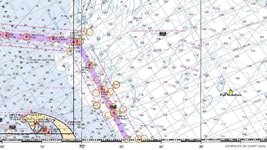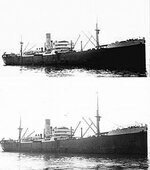Batavia
Jr. Member
Re: $3B WWII Shipwreck Located in Boston Harbor's Back Yard
There is a list of WWII ships carrying platinum lost in all parts of the world and various depths too...
The quantities are quite big (50 or 70 tons), but I only found it was matte and not bars or ingots...!! Which means a LOT of difference ! Platinum mineral concentration in these cases is never worth a very costly salvage, otherwise deep salvors would have put their technology to retrieve those cargoes long time ago...
There is a list of WWII ships carrying platinum lost in all parts of the world and various depths too...
The quantities are quite big (50 or 70 tons), but I only found it was matte and not bars or ingots...!! Which means a LOT of difference ! Platinum mineral concentration in these cases is never worth a very costly salvage, otherwise deep salvors would have put their technology to retrieve those cargoes long time ago...




![Lading document-portion[2].jpg](/data/attachments/603/603347-86e8339447f50891230ea81aaff8738f.jpg)


